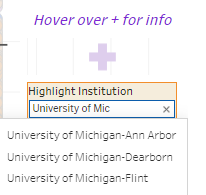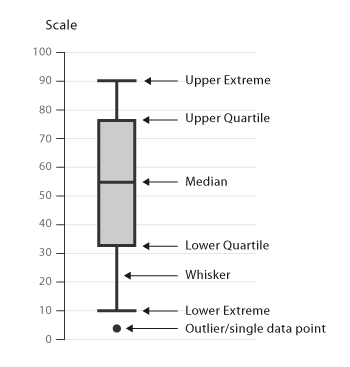The Migration Advisory Committee’s annual report for 2023 ended up being one of the publications with most policy influence on the subsequent year.
Though it was released the week after then Home Secretary James Cleverly announced a review of the Graduate route, it clearly reflected ongoing Whitehall discussions and concerns over the post-study work visa, and much of its conclusions ended up being quoted incessantly through the subsequent debate around the MAC review – especially by those in favour of the route’s abolition or restriction:
The graduate route may not be attracting the global talent anticipated, with many students likely entering low-wage roles.
Our concern that the graduate visa would incentivise demand for short Master’s degrees based on the temporary right to work in the UK, rather than primarily on the value of qualification, may well be borne out in the trends that we have observed.
As we have already shown, the rise in student numbers is almost entirely focused on taught Master’s degrees, and the growth has been fastest in less selective and lower cost universities. The rise in the share of dependants is also consistent with this.
Given all that, it’s probably a relief to all concerned that the 2024 edition of the MAC annual report doesn’t go in depth on any international student-related issue, reflecting what feels like a (welcome) period of stasis in visa policy affecting higher education under the new government.
Nevertheless, the MAC has a beefed up role under Labour – additional civil servant resource, plus we now learn that chair Brian Bell’s role will move from two to five days a week – and this time around the questions percolating away are worthy of some long-term thinking, even if they are not going to lead to knee-jerk policy decisions.
Staying or going
The annual review kicks off with consideration of long-term net migration trends, noting that the general election saw all main parties commit to bringing headline figures down.
Thinking ahead, it notes:
In the long run, work routes will have a greater impact on net migration compared to study routes as a greater percentage of those on the work route stay in the UK, whilst students are more likely to emigrate when they finish their course. Put simply, whilst students increase net migration in the year they arrive, they will reduce it by the same amount if and when they leave.
This is a helpful soundbite for the sector, after last month’s ONS figures started to make clear what has been evident for a while – that historic claims around the “vast majority” of international students leaving the UK after completing their courses no longer hold much water. The ONS net migration stats estimated that the proportion of those on student visas who had transitioned to another visa three years after arriving was 48 per cent for those who arrived in year ending June 2021. This was up from nine per cent for those who arrived in June 2019, largely driven by introduction of the Graduate route.
But the detail is still uncertain, as the MAC goes on to acknowledge. It cites recent Migration Observatory modelling (director Madeleine Sumption is now the MAC deputy chair) which estimates that the “stay rate” after eight years is around 26 per cent for those on study visas, compared to 56 per cent for those on work visas. The consequence of this is that – again, according to the Migration Observatory’s heavily caveated modelling – is that student visas contribute to 19 per cent of long-term net migration.
(The modelling also lets you adjust the assumptions around stay rate and annual international student numbers – the baseline is rather simplistically 250,000 new student visas every year from 2024 to 2032, though to be fair recent volatility means that putting a firm prediction on international recruitment is a brave bet in itself.)
All in all the MAC notes that stay rates are “highly uncertain” – but it’s an issue that will continue to inform the wider political debate, especially as the post-pandemic bulge is gradually smoothed out of net numbers. It’s notable in this context that think tank Labour Together – which typically has the ear of the government – has just put out a proposal for a “national migration plan” based on nationally set targets for different routes. Student visas, it says, would only be included in the analysis “to the extent that they have an impact on long-run net migration” through the Graduate and Skilled Worker visa routes.
The skills puzzle
The central piece of this year’s review is driven by the observation that the new government’s intention is “to more closely link migration and skills policy.” Given that starting point, the MAC carefully explores to what extent this can work. It’s of course written in the careful language you would expect of a government-sponsored committee with a Home Office secretariat, but reading between the lines there’s a cautionary note to it all (and not just in the observation that “skills” is an “ambiguous term both conceptually and empirically” – don’t tell Jacqui Smith).
“In theory”, MAC observes, skills shortages lead employers to recruit using the immigration system. “If this were true,” the government can bring down work-related immigration via the reduction of skills shortages.
In practice, there are some complications. Most obviously, skills investments take a long time to translate to the labour market – the last government repeatedly took the quicker route of facilitating international recruitment, especially in the health and care sectors, but also in not insignificant ways in areas like filling teacher vacancies.
The MAC also stresses how employers will not deliberately make choices around whether to hire UK-based workers or those from overseas (speaking to The Times, Brian Bell specifically points to academic recruitment as an area where employers – universities – would not change their hiring practices if the domestic labour force had better qualifications). We are also told that labour demand and supply are not independent (“employers look for what they think they can get, and employees try to match what employers want”), and that skills aside there are other differences between domestic and international recruits.
For the construction industry, this latter point was vividly illustrated by the Financial Times last week, which argued that many businesses in this field prefer “pay-by-the-day” labour and self-employed staff, and hence hire internationally and typically not via skilled worker routes – another consequence of this is that they are unlikely to commit to training apprentices. (The article also cites Brian Bell saying that high net migration leads to “real strains on our ability to manage housing and infrastructure,” in case anyone was thinking the MAC will take a more dovish approach under Labour.)
All in all, bringing about a join-up between the skills and migration systems is a tough ask – or, more cynically, an unrealistic policy goal. It’s clear that the MAC is trying to temper expectations about what can be achieved:
Linking immigration and skills policy is not a ‘one-size-fits-all’ approach and it is important to consider the individual circumstances within sectors and occupations, including diagnosing whether shortages are genuinely driven by a lack of skills or are due to poor pay and conditions of certain roles.
And the elephant in the room is pay. In the care sector, the MAC has repeatedly stressed that wages need a significant uplift for other visa-related tinkering to have an impact. It stresses this again here, and makes the point that a large proportion of work visas go to public sector workers.
This is a point for Skills England to take on board as well, you would hope. Its initial report was notably incurious about the role of low pay (especially in the public sector) in driving “skills mismatches”, rather presenting employment more as a simple supply and demand relationship between skills available and skills needed. The MAC annual report has some more persuasive analysis here, showing a lack of correlation between so-called “skills shortage vacancies” (SSVs) and skilled worker visa usage. That is to say, it’s by no means a given that those industries facing skills shortages are the ones more likely to sponsor workers from overseas. There are all kinds of factors at play.
Quad to the rescue
You get the sense that the team of economists who make up the Migration Advisory Committee are being careful about the government’s plans to link up skills and migration in a coherent way (it’s also noted at one point that skills is devolved and immigration is not – another challenge).
What we’re getting to make this all fit together is a new “Quad framework” (I believe this is the first time it’s publicly been referred to in this way). As promised in Labour’s manifesto, the strengthened MAC will be working with the newly launched Industrial Strategy Council, the Department for Work and Pensions, and Skills England – the manifesto in fact promised “skills bodies across the UK”, but this hasn’t been fleshed out yet.
This Quad will cooperate “to address systemic long-term issues that have led to reliance from certain sectors on international recruitment, and where appropriate, to reduce that reliance.” The MAC anticipates that the Quad will help identify priority sectors (following the industrial strategy, when ready) and determine which have a high reliance on migration, after which the MAC will – if it sees fit – recommend policy levers the government might pull, while Skills England will be drawing up workforce and skills plans, of some sort.
It’s all a recipe for an incredibly complicated set of moving parts, and given Skills England’s involvement and the importance of overseas staff and student recruitment, one that the English higher education sector would be wise to keep an eye on and work out how it can contribute to.









